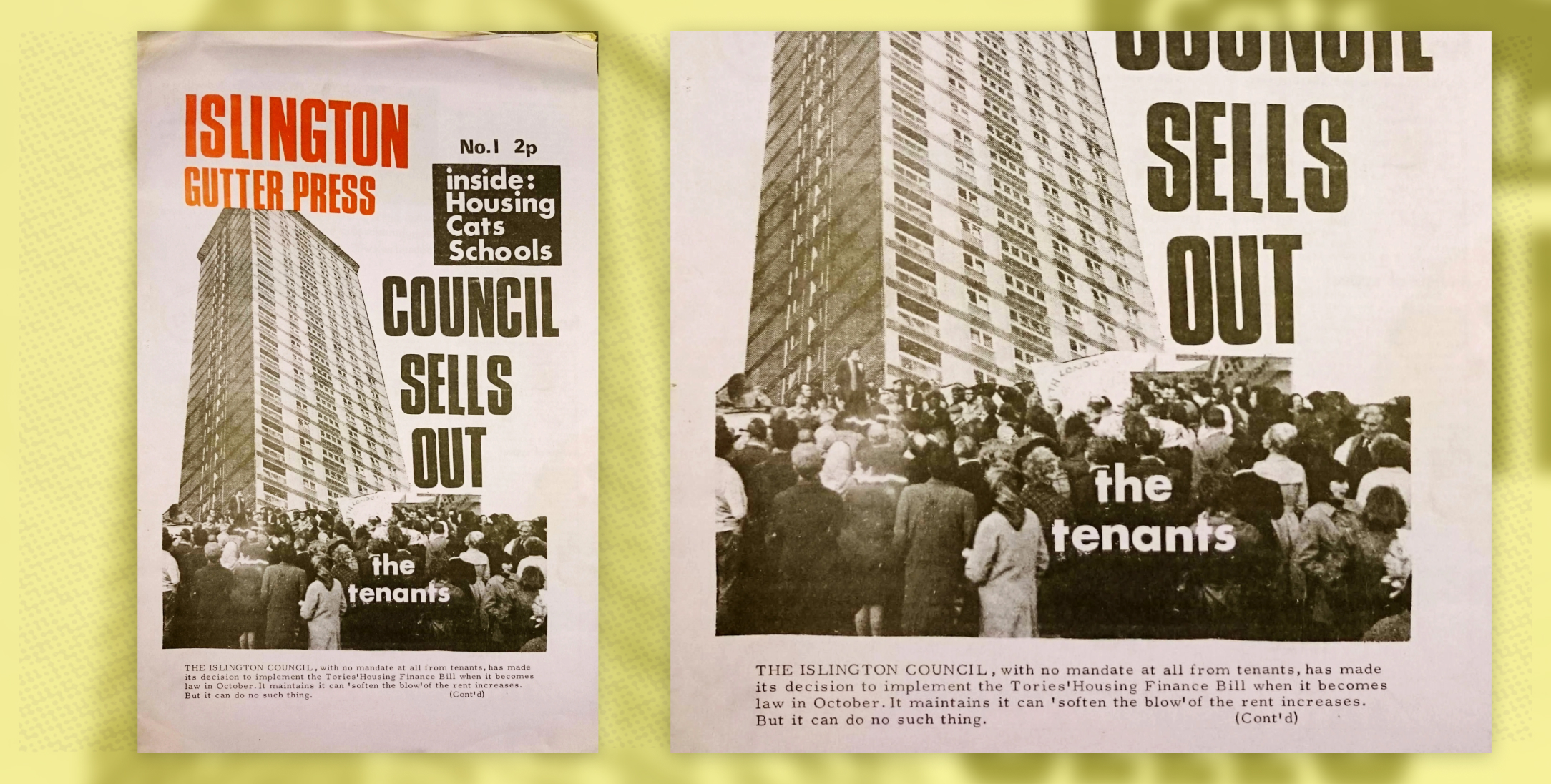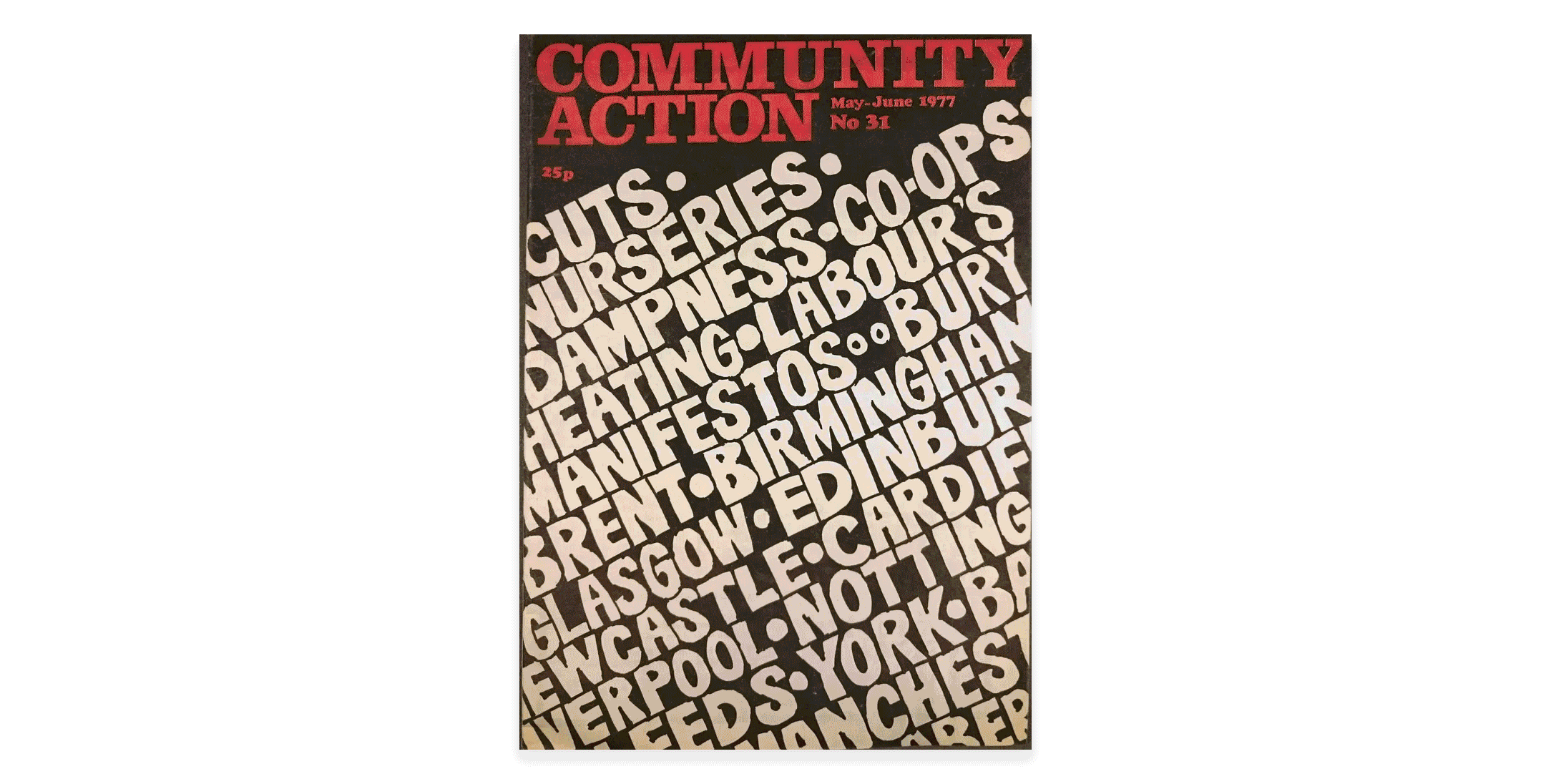Featured Contributor - Alan Marshall
Alan Marshall first stumbled into the world of printing and graphic design as a practicing, self-taught radical printer in Scotland. He was the director of the Museum of Printing and Graphic Communication in France before retiring in 2015 and continues to actively contribute to the field as a member of the Association of European Printing Museums.
A frequent uploader to The People’s Graphic Design Archive, he is corrently collaborating with a dedicated group of curators in the creation of a French-language thesaurus of terms used to catalog printed ephemera. Alan now resides in a small town in the French Alps, south of Grenoble.
When asked him to pick 1 or 3 of his favorite uploads it was difficult for him to choose, which is understandable considering his impressive track record of 86 uploads since The PGDA’s launch in September 2022. He humbly acknowledged, “Not being a graphic design historian, I’m not sure that I’m well placed to evaluate their contribution to graphic design history.” Below are a few of the uploads that reflect some of Alan Marshall's preoccupations over the years in his successive careers.

I suppose the starting point has to be the radical community press (using the term ‘community’ in the 1970s UK grassroots, local organizing sense). And where better to start than with the first issue of the London-based Islington Gutter Press which, when it was produced in 1972, was light years away from what was commonly thought of at the time as graphic design. It oozes amateurism and local involvement, with its wobbly Letraset and ropey printing. Indeed, it’s a bit of a mess. But it’s a dynamic mess. The headline is direct and the trailer for the inside intriguing. It’s a paper that shouts out that it knows where it’s going, or if it doesn’t actually know where it’s going, it at least knows it’s going somewhere.
There were hundreds of such newspapers in the UK in the 1970s, some long-lived, most more or less ephemeral. Unfortunately, the radical community press has been largely overlooked, eclipsed by the punk and post-punk fanzines which quickly found the favors of social, cultural and design historians. And for the moment it remains under-researched, though initiatives like the PGDA and a flowering of independent digital archives―often politically rather than academically or design motivated―are beginning to offer greater visibility to little-known collections which often turn up in unexpected places. In the case of this copy of Islington Gutter Press I rediscovered it recently in the Special Collections of Aberdeen University Library (in Scotland) when preparing an exhibition about Aberdeen People’s Press, the local alternative newspaper and radical printshop I worked for in the 1970s. Rather unusually, around the time that APP closed its doors, it’s entire archives were donated in two lots: the first, which went to the University Library contained APP’s printed output and a collection of British radical community papers; the second went to the City Library and contained the firm’s business papers which include a lot of graphic materials that were never intended to be conserved. They were recently brought together in the University’s Special Collections.
One of my ongoing professional preoccupations has been the extent to which disciplines such as book history, printing history and graphic design history manage to ignore each other. They do so very cordially of course, each acknowledging the importance of what the others do. But also quite resolutely, to the point that one sometimes wonders whether we are really working in related fields. It’s no scoop of course that academia is not always the most fertile ground for interdisciplinary research to flourish in as university departments struggle to keep up with their reporting, chase after ever shorter-term funding, and consolidate their legitimacy as a discipline. Not to mention the invisible demarcation lines between libraries, the traditional guardians of print culture, and museums, whether of the book, printing or graphic design variety. It can all be a little dispiriting at times.

So, my second item is a slightly tattered 1950s layout for a press advert, or perhaps a point-of-sale card, for Tide washing powder. The kind of graphic object which gives everyone a headache. First of all, the repro house or printer who produced or used it and can’t wait for the first good excuse to throw it out once it has passed its use-by date. Then, in the event that the document has survived successive printers’ clear outs and someone has had the presence of mind not only to keep it, but also to think about giving it to a heritage institution for safe keeping, who should they approach? Who would be interested in such a thing? A printing museum would be the obvious choice, but printing museums are thin on the ground, and if there does happen to be one in the district it is likely to be small, and busy devoting all its energies and its meagre resources to preserving machines rather than slightly dubious documentary archives. A library? Highly unlikely, unless the layout had been used by an absent-minded scholar as a bookmark in an in-folio incunable or in a large format artist’s book. An industrial museum? Again unlikely, as museums of science and industry have been under pressure for the last thirty years to put their printing collections into storage to make way for more exciting communications technologies. A graphic design museum? I would like to think that the jury is still out on that one in the light of the interest which has been growing among graphic design historians in recent years with respect to questions of process.
The washing powder advert in question came from an important, now defunct printing firm which had been established in Lyon in the late 19th century. The former proprietor of the firm, who had hung on faithfully to the firm’s archives for a couple of decades before gifting them to The Museum of Printing in 2012, couldn’t understand why we started jumping up and down with excitement when we discovered a box of layouts from the 1950s. His immediate reaction was that they were worthless and of no interest to anybody and that we should throw them in the bin. The fate reserved for the vast majority of the working documents which tell us so much about graphic processes in action.

My third choice would be a London Transport travel card from 1987. Mainly, if truth be told, because I find it pleasing. But also because someone took a lot of trouble to design and print this ‘transient minor document of everyday life’ (to borrow Maurice Rickard’s definition of printed ephemera). The typography is lively but easy-going despite the density of information. The London Transport red is a familiar companion while the three-colour imitation of security engraving lends a bit of fantasy to brighten up what might otherwise be an uneventful commute and tempts you to keep it as a bookmark. And the cherry on the cake―for a printing historian at least―is that it is printed in five colours with additional numbering and a manually applied date stamp. A well-designed public transport ticket is worth its weight in gold and to my mind this one is up there with the best and deserves the place it occupies in the collections of the Museum of Printing which in 2014 added Graphic Communication to its name.

As for where the items I post on the PGDA come from, I’m not a collector, at least not in the physical sense—except for a small collection of actual paper documents concerning radical printing and the community press in Scotland. But, like many people, I’ve been accumulating digital images of documents of all sorts for nearly twenty-five years. And with the encouragement of the Museum of Printing and Graphic Communication in Lyon, I’m now posting a selection of items from its collections which, to my mind at least, are of significant graphic interest but which very seldom get to see the light of day in the Museum’s permanent collection or temporary exhibitions.

Items Uploaded by Alan Marshall to The People's Graphic Design Archive
To wrap up our interview we asked if what he thought was missing from graphic design history— he responded
I’ve already mentioned the lack of visibility of the radical community press and same might be said of the graphic output of grass roots community activists in general. To complicate matters, the blanket use of the term ‘zines—with its music and film fan overtones—for almost anything that wasn’t produced by a time-served printer can be very misleading.
The whole field of graphic production which opened up in the wake of desktop publishing is also problematic to my mind. Problematic to the point that I’m not even sure what it should be called. All the more so because it covers a vast array of modes of production from self-publishing, through office document production and the grey literature of academics, to highly specialized scientific and technical documentation. Design history takes an interest in some of the political, cultural and artistic productions. Likewise for some categories of information design, a field which raises many important questions in terms of the design process. But whole swathes of ‘self-production’ are considered to be too low grade to be worthy of attention―a position which can no doubt be defended from a formal point of view, but which largely ignores the consequences of the transformation of graphic production which occurred in the twentieth century when graphic design became an autonomous sector within printing, and when printers lost their five-century-old monopoly over the reproduction of words and images.
That said, as a printing historian I have to make my own mea culpa because, for the moment, there is no coherent historiography printing technology in the long twentieth century taking account of the impact of the progressive merging of printing, data processing and office document production on graphic communication. Printing historians and especially book historians seldom go into the nuts and bolts of graphic production in the post-letterpress twentieth century. And graphic design histories seldom go beyond a brief flash of attention when DTP arrives in the narrative. Although questions of process are now beginning to be taken seriously among some graphic design historians, perhaps as part of the much heralded but slow-to-come deconstruction of the graphic design canon.
--
View Alan Marshall’s uploads to The People’s Graphic Design Archive here.
Upload your graphic design finds 10+ yrs and older to peoplesgdarchive.org and please reach out to hello@peoplesgdarchive.org if you have any questions on uploading to The Archive.